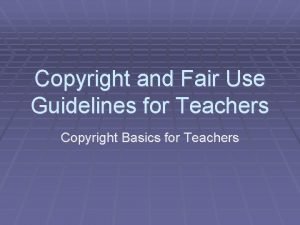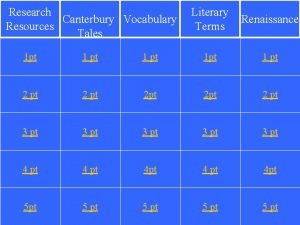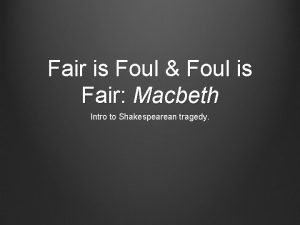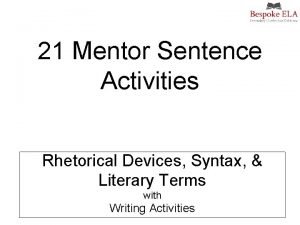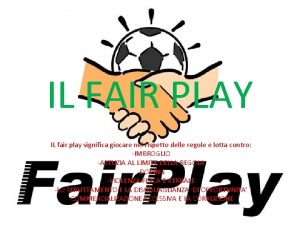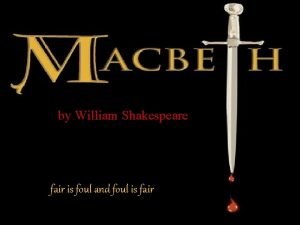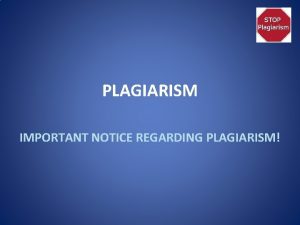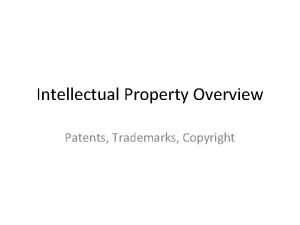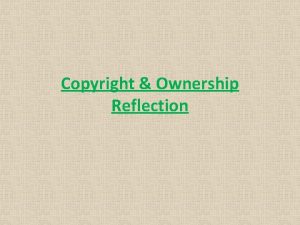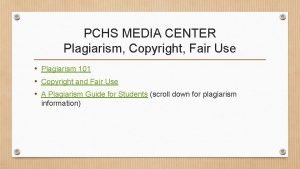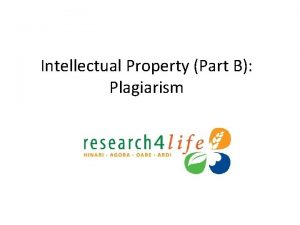Plagiarism Copyright Fair Use and Intellectual Property Plagiarism










- Slides: 10

Plagiarism, Copyright, Fair Use and Intellectual Property

Plagiarism

What is plagiarism? “To steal and pass off as one’s own (the ideas and words of another)” Webster’s Third New International Dictionary of the English Language

Examples of plagiarism Ø A direct quote without any quotation marks or a citation. Ø A direct quote enclosed in quotation marks but containing no citation. Ø A paraphrase without a citation.

Examples of proper use of resources Ø A direct quote enclosed in quotation marks and containing a citation. Ø A paraphrase containing a citation.

Tips for Avoiding Plagiarism Ø Know the difference between common knowledge and information that needs to be cited. Ø Take notes when reading sources. Ø Give credit to authors of your sources by providing citations. (in-text citations and works cited list citations) Ø Don’t procrastinate.

Citation Manuals Available in the Roberts-La. Forge Library Ø MLA Handbook for Writers of Research Papers (6 th Edition) Ø Publication Manual of the American Psychological Association (5 th Edition) Ø The Chicago Manual of Style (15 th Edition) Ø A Manual for Writers of Term Papers, Theses, and Dissertations (Turabian)

Other Issues Related to the Use of Resources Ø Copyright Ø Fair Use

What is copyright? “Copyright refers to the legal right to reproduce, publish, and sell intellectual property. (Intellectual property includes books, articles and other types of resources). In many cases, the author holds the copyright. ” Teaching Information Literacy: 35 Practical Standards-based Exercises for College Students

What is fair use? Fair use is the provision which allows users of resources to reproduce them for research purposes. It allows photocopying parts of a book and printing articles and other resources online. Teaching Information Literacy: 35 Practical, Standards-Based Exercises for College Students
 Fair use guidelines for teachers
Fair use guidelines for teachers Fair use plagiarism
Fair use plagiarism Music copyright fair use
Music copyright fair use Foul is fair and fair is foul literary device
Foul is fair and fair is foul literary device Alliteration in macbeth
Alliteration in macbeth Fair is foul and foul is fair
Fair is foul and foul is fair What is syntax rhetorical device
What is syntax rhetorical device Fair is foul and foul is fair significato
Fair is foul and foul is fair significato Examples of fair is foul and foul is fair in macbeth
Examples of fair is foul and foul is fair in macbeth Trade related aspects of intellectual property rights
Trade related aspects of intellectual property rights Secondary infringement
Secondary infringement
